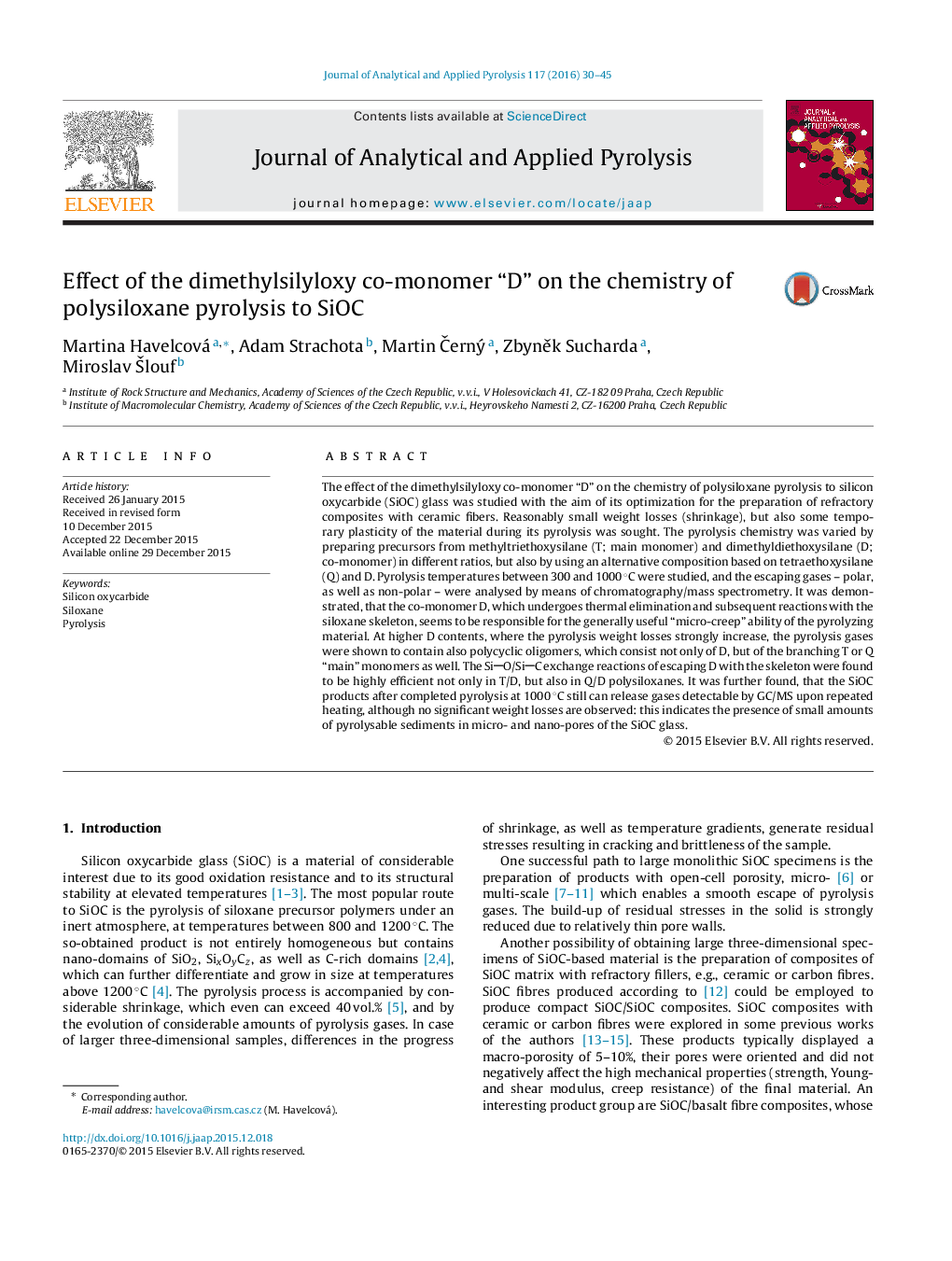| کد مقاله | کد نشریه | سال انتشار | مقاله انگلیسی | نسخه تمام متن |
|---|---|---|---|---|
| 1196612 | 1492960 | 2016 | 16 صفحه PDF | دانلود رایگان |

• Dimethyldiethoxysilane (D) was used to prepare silicon oxycarbide (SiOC).
• D units are responsible for increased weight losses during SiOC preparation.
• D units are incorporated into SiOC, after undergoing SiO/SC exchange reactions.
• D units reduce tendency of resins to cracking and making pores.
• Pyrolysable sediments in micro- and nano-pores of the SiOC glass were indicated.
The effect of the dimethylsilyloxy co-monomer “D” on the chemistry of polysiloxane pyrolysis to silicon oxycarbide (SiOC) glass was studied with the aim of its optimization for the preparation of refractory composites with ceramic fibers. Reasonably small weight losses (shrinkage), but also some temporary plasticity of the material during its pyrolysis was sought. The pyrolysis chemistry was varied by preparing precursors from methyltriethoxysilane (T; main monomer) and dimethyldiethoxysilane (D; co-monomer) in different ratios, but also by using an alternative composition based on tetraethoxysilane (Q) and D. Pyrolysis temperatures between 300 and 1000 °C were studied, and the escaping gases – polar, as well as non-polar – were analysed by means of chromatography/mass spectrometry. It was demonstrated, that the co-monomer D, which undergoes thermal elimination and subsequent reactions with the siloxane skeleton, seems to be responsible for the generally useful “micro-creep” ability of the pyrolyzing material. At higher D contents, where the pyrolysis weight losses strongly increase, the pyrolysis gases were shown to contain also polycyclic oligomers, which consist not only of D, but of the branching T or Q “main” monomers as well. The SiO/SiC exchange reactions of escaping D with the skeleton were found to be highly efficient not only in T/D, but also in Q/D polysiloxanes. It was further found, that the SiOC products after completed pyrolysis at 1000 °C still can release gases detectable by GC/MS upon repeated heating, although no significant weight losses are observed: this indicates the presence of small amounts of pyrolysable sediments in micro- and nano-pores of the SiOC glass.
Journal: Journal of Analytical and Applied Pyrolysis - Volume 117, January 2016, Pages 30–45